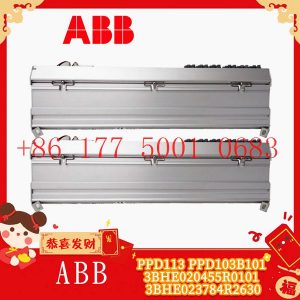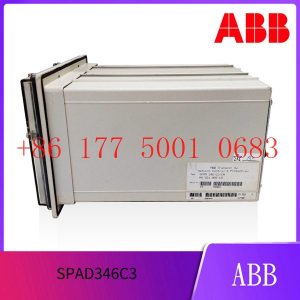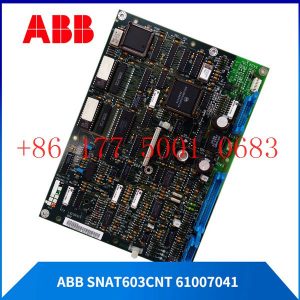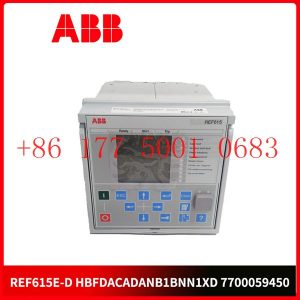Description
hardware flow control. It is an ideal choice in the field of industrial automation.
In the Internet of Things era, look at the IOT strategic deployment of the “four major families” of industrial robots
When we talk about Industry 4.0 or smart manufacturing, we cannot help but mention the “four major families” of robots – KUKA, ABB, FANUC, and Yaskawa,
because as the industrial robot companies with the highest level of intelligence at present, they are in the industry They have important influence. In the era of the
Internet of Things, what are these four major families doing?
As a relatively mature product, industrial robots are difficult to judge from the perspective of ordinary users. Especially in today”s era, it is impossible to create a
generational gap through technology.
Just like when someone asks about the advantages and disadvantages of the car-making technologies of Mercedes-Benz and BMW, all I can say is, “It doesn”t matter
if you ride in a Mercedes-Benz or drive a BMW.” Comparing industrial robots to car-making, most of the key technologies used in car-making must be shared by Mercedes-Benz
and BMW. The differences in other “marketing technologies” will not affect the technological competition pattern.
So what will industrial robot manufacturers mainly rely on to widen the gap in the future? There is only one answer, the Internet of Things strategy. Without realizing it,
KUKA, ABB, FANUC, and Yaskawa, the four major industrial robot giants, have already been stationed in the field of Internet of Things and are ready to go.
KUKA(Midea)
On December 30, 2016, Midea Group’s tender offer for the shares of Germany’s KUKA Group (KUKA), the world’s leading provider of intelligent automation solutions,
through MECCA InternaTIonal (BVI) Limited, has received approval from all relevant regulatory authorities.
At the annual meeting of Midea Group on January 12, 2017, Fang Hongbo, Chairman of Midea Group, emphasized the industrial significance of Midea’s acquisition
of KUKA: In the future, Midea will build a second industrial segment besides the home appliance industry, namely the robotics and industrial automation industry segment. This is The new growth point of beauty.
The annual meeting invited KUKA CEO TIll Reuter, who has just entered the Midea system, to give a speech. When explaining the core strategic goals for the future,
Reuter mentioned the two concepts of “intelligent machines” and “digital areas”, which are the two concepts that run through the Internet of Things technology in the company”s business:
Intelligent machines: Among the industrial robots manufactured by KUKA, they are equivalent to advanced robots with both autonomy and mobility. Soon a large number
of industrial robots will “step out of the work cage that is isolated from humans” and begin to work closely with humans, further improving their flexibility. Reuter said that as
industrial robots continue to develop, smart machines with better autonomy and mobility will emerge.
Digital area: It is a solution that combines the knowledge related to production processes of various industries that KUKA has cultivated in the past with the
most cutting-edge IT. Reuter said: “We are familiar with the production processes of products such as cars and aircraft. We want to connect our technical experience with IT to provide
customers with intelligent systems.” Reuter said that by optimizing intelligent systems, that is, complex systems based on big data analysis, reducing downtime
and predictive maintenance of various production systems, new business models can be created and a highly integrated value chain can be built.
According to IFR data, in the field of automobile manufacturing, KUKA robots have the largest market share in the world. We might as well start with the automotive industry
and show you how KUKA uses the “Internet of Things box” to construct the Jeep Wrangler”s body-in-white workshop into an IIoT (Industrial Internet of Things) factory.
https://www.xmamazon.com
https://www.xmamazon.com
https://www.plcdcs.com/
www.module-plc.com/
https://www.ymgk.com
940860010102-VBM030 Ultrasonic diagnostic instrument
51403645-100-SBHM Power control board module
51402455-100-MP-DNCF02-200 Honeywell
51402455-100 MP-DNCF02-200 Power module
51304650-100 HONEYWELL Industrial pressure sensor
51303940-150 Honeywell Cabinet fan assembly with alarm
8141649.53 Main board SEW
8100183 Dual process segment controller KONGSBERG
4000093-110N Bolt type terminal connection
3171197-4 B&w Man-machine interface panel
10313/1/1 Honeywell Terminal module
1030211 Relay module PLC-RPT- 24DC/21
822675X.13.17 servo motor
805405-1R Power module unit
395566-003 HP Server motherboard
3500/44M 176449-03 Speed sensor Bently
3500/42M-01-00 Speed monitor Bently Nevada
3500/33 Bently Nevada 149986-01 preamplifier
3500/33 Bently Nevada preamplifier
3500/25 Bently Nevada Accelerometer sensor
3500/25 149369-01 Speed sensor Bently
350022M-288055-01 Transient data interface Bently
3500/15 Power module Bently Nevada
3500/05-02-04-00 bently Monitoring vibration
330180-51-00 bently preprocessor
330180-50-00 5/8 mm proximity sensor
330105-02-12-05-02-05 Bentley Reverse mounting probe
Bently 330100-90-01 Vibration sensor
330016-11-01-03-00-00-01 BENTLY NEVADA
2300/25-00 BENTLY monitor module
192061B-02 NI acquisition card data connection cable
190065A-01-01-01-00-00 Universal equipment monitor
146031-01 Transient data interface I/O module
140734-01 4-channel monitor Bently
133442-01 Output module Bently
129478-01 High DC power input
128275-01-E Seismic monitor module
125720-01 Bently Nevada channel relay module
086349-002 Measuring Pcb Circuit board
ABB 086329-004 PWA,ECS,END COL
81943A041 Amplifier TC assy
80190-380-01-R Rectifier/charger
80026-044-06-R Power switching module
65040-PACV-AYU2 Control swing valve
41391-454-01-S1FX Control module Allen-Bradley
24765-02-00 Casing expansion sensor system
10350-00104 Ethernet connection Connect.
10244-27-50-01 Liquid level sensor
9907-1183 Control of various turbines
9907-167 Digital regulator control







Reviews
There are no reviews yet.